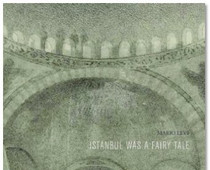
This article is an addendum to my New York Journal of Books review of the novel which readers should read first. If after reading my review you decide to read the book, a decision in view of the book's dense and difficult prose that I can only endorse for readers whose verbal SAT or GRE scores place them in the 90th percentile or higher, come back to this article in a month or two when you've finished reading the book. If my review convinces you not to undertake so daunting a read but you are nonetheless curious about the book this article will give you the Cliff Notes version.
As I mentioned in my review the novel has a very large cast of characters. If there is one character who is a kind of linch-pin to whom the other characters are connected that character would be Monsieur Jacques. He was born at the turn of the previous century and entered adulthood at the end of World War One and the birth of the Turkish Republic as did his older brother Nesim, Nesim's wife Rachael, Monsieur Jacques' wife Madam Roza, her sister Madam Estreya, a Ladino speaking and Istanbul raised Ashkenazi woman named Olga who is like a sibling to Jacques and Nesim and whose father Moses Bronstein immigrated to Istanbul from Riga by way of Odessa and Alexandria, the narrator's Uncle Kirkor who was Monsieur Jacques' closest confidant, Uncle Kirkor's wife Ani, and the narrator's Aunt Tilda. Their generation was the first to be educated in French and they enjoyed an unprecedented level of urbanity, worldliness, sophistication, and in some cases decadence.
Towards the end of this non-linear novel we learn that Monsieur Jacques' grandfather Yasef founded the family business after apprenticing under an Armenian carpet weaver and subsequently starting his own carpet business. Yasef's son and Monsieur Jacques' father Avram switched the business from carpets to textiles. Avram's wife was Madam Perla who survived her husband and went blind in her old age.
Her oldest son Nesim lived and studied in Vienna where he became fluent in German. After World War One, and perhaps after seeing how his Muslim countrymen had treated their Christian compatriots, Nesim decided that a western democracy would be a safer place to raise a Jewish family, and moved to France. Two decades later when France is occupied by Nazi Germany a Turkish consular official advises Nesim to return to Turkey with his family. But Nesim tragically believed that his Turkish passport and fluent German would spare him, his wife and three daughters from deportation. The family's domestic servant hides their youngest daughter Ginette in a convent, and the rest of the family are deported to Auschwitz. Nesim's friend Henry Moscowitch, a Spanish Communist who had fled to France after the Spanish Civil War, was also deported and is the only one of the group to survive the concentration camps. After the war he takes custody of Ginette from the convent and returns her to her relatives in Istanbul. When Ginette grows up she emigrates to Israel, raises children of her own, one of whom dies in military service.
During World War Two Turkish diplomats in German occupied countries used their consular offices to issue visas and save about 35,000 Jews. At home in Turkey the government conscripted religious minorities into segregated military units and imposed a devastating wealth tax on non-Muslims. Those who could not pay the wealth tax were sentenced to labor camps. These policies fell on Christians as well as on Jews, and convinced many of the latter to emigrate after the war. Characters in the novel leave for Mexico, Argentina, England, America, and the greatest number go to Israel. Today Turkey's Jewish population numbers less than 20,000 whereas Israel's population includes 70,000 Israelis of Turkish descent.
Monsieur Jacques and Madam Roza's oldest son Robert emigrates to England, becomes a wealthy coffee trader whose occupation takes him on business trips around the world and remains a bachelor. His closest friends in London are also ex-pats. The middle son Berti earns a graduate degree at Cambridge University where he falls in love with a non-Jewish Mexican photographer. After graduation he returns to Istanbul where his parents convince him to end that relationship. Berti marries Juliet, an Istanbul Jewish woman of whom the family approves; the couple stay in Istanbul and raise two daughters, Rosy and Nora. Monsieur Jacques and Madam Roza's youngest son Jerry attends Harvard University, becomes a Mormon, marries and has children, and breaks off all ties with his family of origin.
These are just a few of the novel's many characters. For the most part the narrator conveys their stories in his own voice with relatively little dialogue or for that matter monologues in other character's voices. In the few places where Mr. Levi lets his characters speak their voices provide relief from the narrator's discursive ruminations. Despite the problems I have addressed in New York Journal of Books Istanbul Was a Fairy Tale deserves wider notice than my lonely review.

